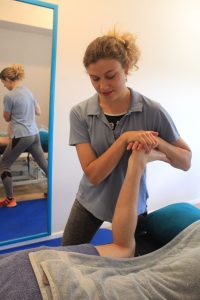
The most common question I get asked is “What is Soft Tissue Therapy?” So, it seemed to make sense to tackle this question with my first Central Health Physio blog.
The main reason for confusion amongst my patients appears when trying to discern the difference between Soft Tissue Therapy (STT) and other massage therapies within physiotherapy. The simplest response is that STT uses a large variety of treatments, one of which is massage, hence they are non-comparative. Instead, it is useful to see that massage is simply part of the larger spectrum of STT.
OK. But, is Soft Tissue Therapy Soft?
No. Soft Tissue does not mean soft as in gentle – but refers to body structures that are not hard, like bone. Soft tissues include: all levels of muscle (from superficial to deep), tendons, ligaments, fascia, skin, fibrous tissues, nerves and blood vessels.
So, what can STT help me with?
The treatment and/or alleviation of musculoskeletal pain, sporting and non-sporting injuries, chronic and acute tension, as well as improving body flexibility, strength and wellness. All this has the additional benefit of improving your mental well-being too. [1]
It is important to remember to also seek guidance from your GP for chronic and/or complex issues, and to see a Physiotherapist first if your issue has not been diagnosed or seen to before.
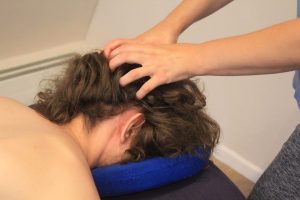
Can you give me some examples of issues you have helped with?
- Plantar fasciitis
- Headaches
- Upper back pain and tension
- Postural issues associated with desk-based occupations
- Shoulder protraction (slouching)
- Face tension and associated eye pain
- Tennis elbow
- Neck pain and stiffness
- Lower back pain
- Post-operation rehab
- Pre & Post Ski Strength and Rehab
- Arthritis
So, what techniques are used in Soft Tissue Therapy?
Soft Tissue Release (STR)
Method: I apply pressure on your affected muscle to create a temporary attachment point, and then move your muscle into a pain-free stretch.
Reduces: pain.
Works because: STR targets specific areas of tension within a muscle, making it useful for targeting muscles that are difficult to stretch actively (yourself) and for isolating a muscle within a group of muscles that would normally stretch together. [2]
Post isometric relaxation (PIR)
Good for: Tight hamstrings, which can contribute to back pain.
Method: I very gently stretch your hamstrings passively, to the point of first resistance, so you should only feel a very mild stretch, if at all. You would then resist my push very lightly – with about 10-20% of your force, for 10 seconds. You would then relax, and I would use this to gently stretch your hamstring a little further, until the next point of resistance. We would repeat this together 3 to 5 times. [3]
Reduces: muscle spasms.
Myofascial Release (MFR)
Wait…what is Fascia!? Fascia is a connective tissue that wraps around and in between every structure in our body, including our muscles – it is very thin, elastic, but tough.
Method: I will apply a sustained and gentle pressure into the problem fascia. This can take a long time, up to 15 minutes on one area alone. This technique is used without oils/creams.
Reduces: fascia tension.
 Trigger Point Therapy (TPT)
Trigger Point Therapy (TPT)
A trigger point may be that area you have been referring to as a ‘knot’.
TPT is unfortunately not that relaxing, but it is very effective. A trigger point is an area that when pressed on causes pain somewhere else – for instance, a TP on your shoulder may transfer pain up your neck and into your head, like a tension headache. [6]
Good for: Shoulder & neck pain.
Method: I apply specific and direct pressure on to your trigger point with my thumb or a tool.
Reduces: Pain.
There are many more techniques that can be utilised, but the one that most of my patients love, of course, is general/relaxing/deep MASSAGE!
The main reason I believe that massage works in reducing your pain, or speeding up your recovery, is because it feels GOOD!
I have realised and learnt that simply having a chance to lie back, have an hour to yourself, and let someone else help you, can do wonders for you! I recommend that in any session you ask for 5 minutes at the end to receive some relaxing massage – it can go a long way to making you feel better!
[1] https://www.cmsfitnesscourses.co.uk/blog/241/sports-massage-the-effects-and-benefits
[2] Soft Tissue Release: A Practical Handbook for Physical Therapists. 28 Aug 2012, by Mary Sanderson

 Trigger Point Therapy (TPT)
Trigger Point Therapy (TPT)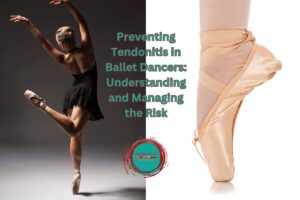
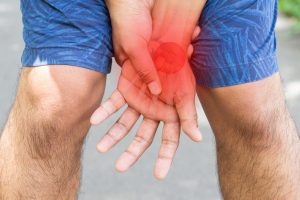
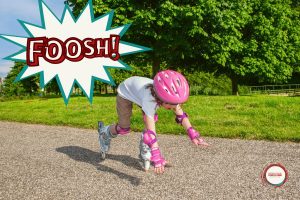
Comments